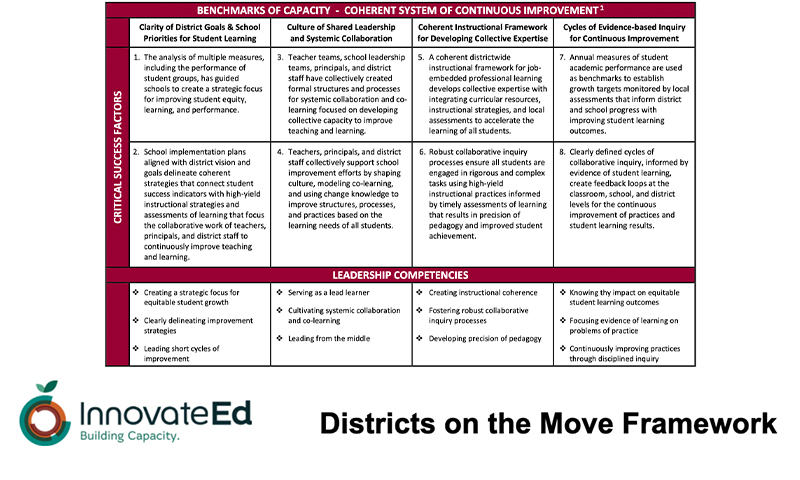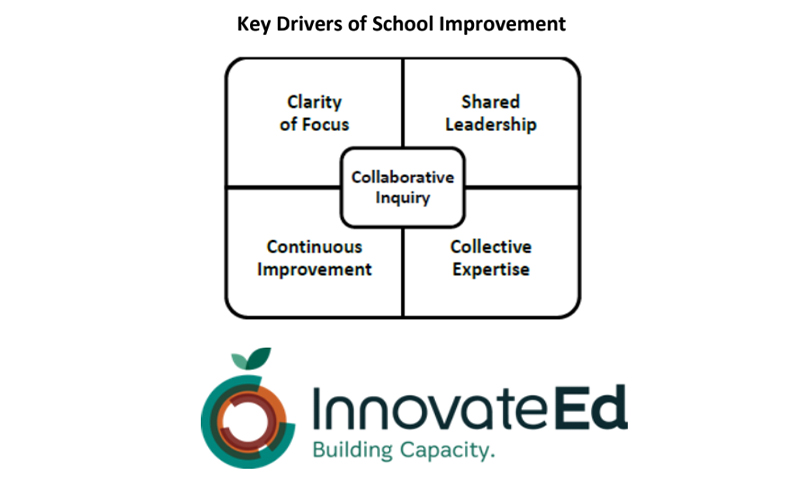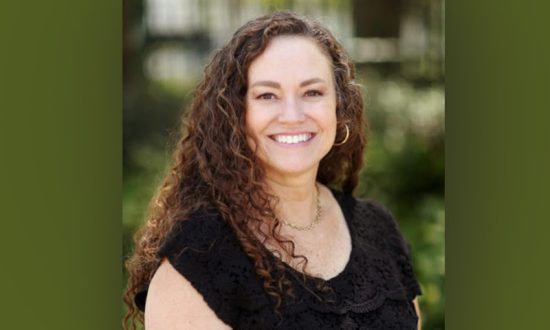Danelle Almaraz is an educational leader with over three decades of experience in the field. Throughout her career, she has gained extensive knowledge in educational leadership, instructional design, including supporting English language learners (ELLs) and students with special needs. Her passion for student success and equity has always been at the forefront of her work, as she is a strong advocate for students and always considers their best interests. With her diverse skill set and dedication to education, Danelle has made a lasting impact on the lives of countless students.
Education is an ever-changing field, and what it needs now may differ from what it required in the past. However, there are some general things that education always needs to be effective. These include a focus on the individual student, a commitment to excellence, and a dedication to continual improvement.
“High impact capacity building strategies create clarity of focus and shared leadership, resulting in collective expertise to deepen student learning. InnovateEd’s Districts on the Move Framework: Benchmarks of Capacity provide school districts with a framework for implementing strategies that build capacity and expertise within and amongst schools.” – Jay Westover

The most critical questions facing educators right now are ones that will determine how
schools and districts identify the most vulnerable and struggling students and collectively decide how to accelerate their learning while addressing their well-being needs.
- Who are the students in our schools who struggle most?
- What are the root causes of this inequity and underperformance?
- How do we collectively seek out and learn from practices that improve learning?
- How do we apply proven practices to achieve growth for all students?
Answering these questions should guide a collective process toward continuous improvement of teaching and learning.
The Districts on the Move framework (seen in the figure above) defines such a process; school improvement is dependent on how site leaders, along with teachers, collectively create clarity of focused priorities, cultivate a culture of shared leadership, develop their collective expertise and commit to a design of continuous improvement. This conceptual framework intends to establish a common mindset for co-learning and co-leading improvement efforts.
At this point in the school year, using the Districts on the Move framework, Anywhere School District has realized that the gradual release method of direct instruction needs to be adjusted due to poor attendance. Some of the current challenges for teachers in using the gradual release model when poor attendance is a reality include the following:
Difficulty maintaining a consistent and effective learning environment: When students are frequently absent, it can be difficult for teachers to maintain a consistent and effective learning environment. This can disrupt the flow of instruction and make it difficult for students to participate fully and engage with the material.
Negative impact on academic achievement: Research has shown that students who miss a significant number of school days are more likely to struggle academically and have lower grades and test scores compared to students with better attendance.
Social and emotional challenges: Students who are frequently absent may also face social and emotional challenges, such as feeling isolated from their peers and falling behind in their studies. This can lead to low self-esteem and a lack of motivation to attend school.
Increased workload for teachers: When students are frequently absent, it can create an additional workload for teachers, who may need to spend extra time catching students up on missed material, putting together work for absent students, or providing additional support to help them catch up.
To address these challenges, it may be helpful for teachers and school staff to work with students and their families to identify the root causes of absenteeism, develop strategies to improve attendance, and investigate other instructional methods. It may also be helpful to involve the community and other stakeholders, such as local businesses or community organizations, in efforts to find an instructional design that is more geographically fluid and inclusive.
Anywhere School District is contemplating moving away from the gradual release instructional design to personalized competency-based learning for the 2023-24 school year. Using the four key drivers in the Districts on the Move framework and the assistance of Innovate Ed as a thought partner, district leadership has put together a timeline to involve stakeholders and implement a personalized competency-based learning design in Fall 2023. Below is the outline created:
Clarity of focus:
January 2023: Begin identifying the specific student competencies the teachers want to focus on and develop a clear vision for implementing personalized competency-based learning.
February-March 2023: Develop a plan for communicating the vision and goals for personalized competency-based learning to all stakeholders, including students, teachers, parents, and community members.
Shared leadership:
April-May 2023: Establish a leadership team or task force to oversee the implementation of personalized competency-based learning and ensure that all stakeholders, especially students have a voice in the process.
June-July 2023: First, provide the administration with professional development so they can support teachers. Next would be professional development opportunities for teachers and other educators to learn about personalized competency-based learning and develop the skills and knowledge necessary to implement it effectively.
Collective expertise:
August-September 2023: Facilitate cross-school collaboration and sharing of best practices among educators to ensure that all schools in the district can benefit from the collective expertise of the district.
October 2023: Regularly gather and analyze data on the implementation of personalized competency-based learning to identify areas for improvement and share best practices with the entire district.
Continuous improvement:
November-June 2023: Use data and ongoing feedback loops from students, teachers, and other stakeholders to continuously refine and improve the district’s implementation of personalized competency-based learning.
It’s important to note that this timeline is just a suggestion and can be adjusted based on the specific needs, feedback and resources of the district. To ensure the long-term success of the personalized competency-based learning design, it will be important to provide ongoing support and professional development opportunities for teachers. This could include regular check-ins, coaching, or additional training as needed.
Overall, it will be essential to have a clear plan in place and allocate sufficient resources and support to ensure the successful implementation of the personalized competency-based learning design in the fall of 2023.
This checklist below will only focus on the first key driver in the Districts on the Move framework for improvement: Clarity of Focus. The Districts on the Move framework promotes creativity, innovation, and shared leadership. Take a moment to reflect on your current instructional framework and use the checklist below to discover the next steps. It often takes a thought partner outside the organization to guide education regeneration.
Part 1 Clarity of District Goals and School Priorities for Student Learning and Leadership Competencies
As educational leaders, we must maintain a clear focus on our work. Clarity of Focus means setting priorities and staying true to our core values and beliefs. It can be easy to get caught up in the day-to-day grind of our jobs and lose sight of what is truly important. However, if we keep our focus clear, we can continue to provide quality education for our students and lead our schools to success.
Now is the time for schools and districts to have a vulnerable conversation about the current challenges in education. Clarity of Focus requires you, as educational leaders, to take heart and listen to your students, teachers, parents, and community leaders to create a system that enhances the potential of every child. Collect data and develop a profile of a learner as well as an aligned assessment framework. These two documents will then guide your decisions on the next steps for an instructional design that is more geographically fluid. Work and school are becoming geographically neutral, and we need to adjust teaching and learning. These foundational steps will give you the power to say NO to one more good idea. We have too many initiatives and assessments that do not align with one common goal.
- Critical Success Factor: The analysis of multiple measures, including the performance of student groups, has guided districts to create a strategic focus for improving student equity, learning, and student performance outcomes.
- Multiple measures, including the academic performance and well-being of student groups, are analyzed by schools and district to create a profile of a learner and an aligned assessment framework to achieve equitable performance outcomes.
- All schools have a strategic focus that exists in formal documents, is widely shared, and drives decisions.
- It is clear how the strategic focus for schools is integrated into all plans (SPSA, WASC, etc.) to coordinate and leverage improvement efforts.
- A process is in place to remove distractors, base decisions on evidence, and build coherence year to year.
- Critical Success Factor: School implementation plans aligned with district vision and goals delineate coherent strategies that connect student success indicators with high-yield instructional strategies. Also needed is an assessment framework of teaching and learning that focus on the collaborative work of teachers, principals, and district staff.
- Principals and teachers collaboratively develop and revise school plans based on an analysis of student learning at least every sixty to ninety days.
- Analyzing student learning priorities informs the identification of high-yield instructional practices and the refinement of assessments for learning. These practices ensure that improvement strategies are coherently integrated and guide schoolwide actions for improving student learning to achieve equitable performance outcomes.
- School improvement efforts are aligned with the district vision and goals and inform promising practices Districtwide.
Leadership Competencies
- Creating a strategic focus for equitable student growth
- Clearly delineating improvement strategies
- Leading short cycles of improvement

- What is our North Star for our students, teachers, and families?
- What is our profile of a learner?
- What knowledge, skills, and attributes do we want students to obtain during our time together?
- How will we know when we have met these goals? Do we have an assessment framework?
Mini Course: Navigating a Roadmap for the Next Normal in Education – Overview
Stay tuned for the application of the last three key drivers in The Districts on the Move framework.
Part 2 Culture of Shared Leadership and Systemic Collaboration
Part 3 Coherent Instructional Framework for Developing Collective Expertise
Part 4 Cycles of Evidence-based Inquiry for Continuous Improvement
References
Westover, J. (2019). Districts on the Move: leading a coherent system of continuous
improvement. Thousand Oaks, CA: Corwin Press.
Westover, J. & Steinhauser, C. (2022). Schools on the Move: leading coherence for equitable growth. Thousand Oaks, CA: Corwin Press.




